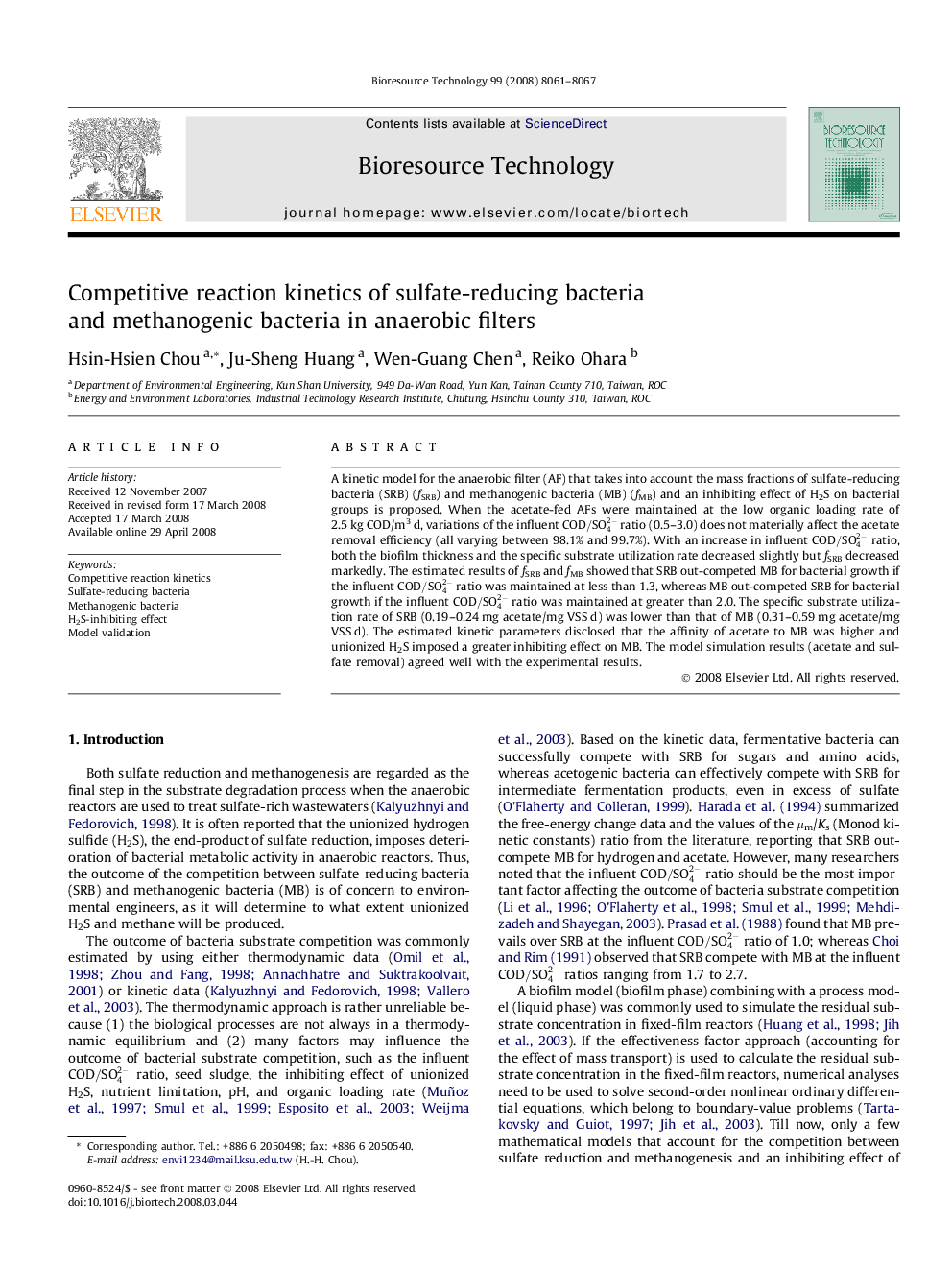| Article ID | Journal | Published Year | Pages | File Type |
|---|---|---|---|---|
| 684530 | Bioresource Technology | 2008 | 7 Pages |
A kinetic model for the anaerobic filter (AF) that takes into account the mass fractions of sulfate-reducing bacteria (SRB) (fSRB) and methanogenic bacteria (MB) (fMB) and an inhibiting effect of H2S on bacterial groups is proposed. When the acetate-fed AFs were maintained at the low organic loading rate of 2.5 kg COD/m3 d, variations of the influent COD/SO42- ratio (0.5–3.0) does not materially affect the acetate removal efficiency (all varying between 98.1% and 99.7%). With an increase in influent COD/SO42- ratio, both the biofilm thickness and the specific substrate utilization rate decreased slightly but fSRB decreased markedly. The estimated results of fSRB and fMB showed that SRB out-competed MB for bacterial growth if the influent COD/SO42- ratio was maintained at less than 1.3, whereas MB out-competed SRB for bacterial growth if the influent COD/SO42- ratio was maintained at greater than 2.0. The specific substrate utilization rate of SRB (0.19–0.24 mg acetate/mg VSS d) was lower than that of MB (0.31–0.59 mg acetate/mg VSS d). The estimated kinetic parameters disclosed that the affinity of acetate to MB was higher and unionized H2S imposed a greater inhibiting effect on MB. The model simulation results (acetate and sulfate removal) agreed well with the experimental results.
